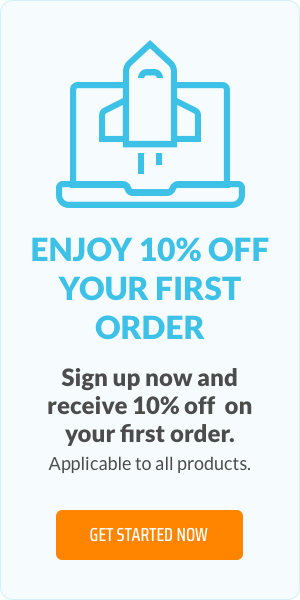Understanding the creator economy

Once upon a time, a handful of prominent media conglomerates, music labels, and publishers held exclusive control over the connection between creators and their fans. They dictated who and what the audience would see, while exerting significant financial influence over creators and their content. However, over the past decade, a fresh and digitally native landscape has emerged, granting creators the power to become their own publishers. This transformation was driven by platforms such as Twitch, Patreon, and TikTok, which democratised content distribution and enabled creators to directly engage with their audiences.
Introduction
In the midst of TikTok's meteoric rise, the continual expansion of Instagram, and the proliferation of emerging social media platforms amidst Twitter's persistent turmoil, the pathway for brands to forge direct connections with consumers has become remarkably uncomplicated.
The driving force behind enabling such a profound connection rests with creators, positioning brands directly in front of today's most impassioned cohort of shoppers while simultaneously upholding their cultural relevance. Conversely, many creators aspire to veer away from fleeting, transactional paid endeavours, seeking instead collaborative, enduring partnerships that nurture the growth of their individual brands.
Introducing the creator economy, an ongoing era in media where personal creativity has transformed into not only a viable revenue stream but also a crucial conduit bridging the gap between brands and untapped audiences. By 2022, an impressive 50 million individuals contributed to the global creator economy, propelling its estimated valuation to an astounding $104 billion.
Where it all began
The creator economy's growth has spanned over a decade, with its origins stretching back even further. The late 1990s marked the arrival of Web 2.0, introducing user-generated content and interactive online experiences. The emergence of mobile technology further fuelled constant internet engagement. Initially, blogging platforms took the lead, evolving from personal online journals into individual media hubs that captivated a fervently engaged online audience.
Monetisation avenues, such as advertisements and brand partnerships, enabled some to sustain themselves solely through blogging, amassing audiences that rivalled established media outlets. Pioneers like Huffington Post and BuzzFeed embraced the essence of blogging, transforming it into a formal media entity. Notably, everyday individuals started featuring in significant advertising campaigns, stepping in for traditional celebrity endorsements, marking the early stages of what we now know as influencer marketing.
The momentum escalated with the rise of reality TV, instantly propelling ordinary individuals to celebrity status. The advent of YouTube's public launch in 2005 revolutionised the landscape, enabling budding talents to gain traction without the need for production contracts. The subsequent decade witnessed the emergence of new social platforms, and recent years introduced incentives for creators, including features like YouTube Shorts. Progress may have unfolded gradually, but it culminated in a sudden and transformative burst of activity.
The rise of the economy
Fast forward to today - the creator economy is experiencing a rapid and remarkable surge. This upward trajectory owes itself to a confluence of technological advancements, economic shifts, and generational dynamics.
Technological Advancements
The internet has successfully dismantled the barriers that were once upheld by a privileged few within creative industries. Sectors like music, literature, film production, and media corporations once held considerable sway not only in determining which creators would flourish but also in dictating their compensation. Today, an array of technologies such as creator-centric marketplaces, social media platforms, content creation tools, digital payment systems, and more, have empowered creators to engage directly with their communities on their own terms, encompassing both financial and creative autonomy. A noticeable hurdle for numerous creators has been prompt and reliable compensation for their efforts, presenting a promising niche for companies that offer instant payouts, a distinctive mark in the realm of this burgeoning creator economy.
Economic Shifts
The aftermath of economic crises such as the 2008 Great Recession and the recent COVID-induced slowdown has ushered in widespread job losses and a transformative reconfiguration of the labor landscape. Those who found themselves displaced from traditional employment found solace within the gig economy, adopting project-based or short-term freelance work as independent contractors until secure full-time positions materialised; others embraced freelancing as their primary income stream.
This paradigm shift has redefined conventional notions of employment and exerted a newfound control over daily routines and financial prospects. Projections from industry experts even forecast freelancers to constitute half of the workforce by 2030, with creators playing a pivotal role in fuelling this evolution.
Generational Dynamics
Millennials, Generation Z, and the emerging Gen Alpha cohort have enthusiastically embraced the ethos of self-employment and entrepreneurial pursuits. In the year 2022, a significant 43% of Gen-Z professionals and 46% of Millennial workers engaged in some form of freelance work, as per Upwork's data.
For many, the creator economy presents an avenue not only for personal income but as a canvas upon which entire business enterprises can be constructed. These generations have grown up as digital natives, effortlessly navigating the tools and platforms that drive the creator economy, and they inherently appreciate and gravitate toward personalised content crafted by relatable individuals. Their preference for connections with personalities, rather than monolithic publisher brands, mirrors the contemporary social and cultural landscape, valuing diversity, uniqueness, and tailored experiences.
You can delve deeper into the growth of tech and change in shopping habits driven by the next gen over on our blog about livestream shopping and how businesses can also build on that as part of their content strategy.
The size of the market
As the creator ecosystem continues its expansion, the potential market for the creator economy is poised to double in size over the next five years, reaching around $480 billion by 2027 compared to its current valuation of $250 billion. This growth trajectory closely aligns with the team's projections for the global increase in digital advertising spending during that same period. The analysts predict that influencer marketing and payouts from platforms, driven by the monetisation of short-form videos through advertising, will serve as the primary catalysts propelling the creator economy forward.
Research from Goldman Sachs anticipates that the number of global creators, currently standing at 50 million, will experience a compound annual growth rate of 10-20% over the next five years. Creators mainly pull their income through direct partnerships to promote products as influencers, receiving a portion of advertising revenues from the hosting platforms, and receiving support through subscriptions, donations, and other forms of direct payments from their followers. According to survey data, brand deals constitute the major revenue source, accounting for approximately 70% of earnings.
It's also crucial to remember that only a mere 4% of creators worldwide are classified as professionals, earning over $100,000 annually. Even with the broader expansion of the ecosystem, research shows that the professional segment's portion of the creator community will remain relatively stable.

Quick tips if you’re starting out as a creator
Identify Your Passion: Start with what you're genuinely passionate about. Choose a niche or topic that excites you and aligns with your expertise or interests. This enthusiasm will fuel your creativity and resonate with your audience.
Define Your Audience: Clearly understand your target audience. Who are they? What do they care about? Tailor your content to cater to their preferences, needs, and interests.
Set Clear Goals: Establish specific, measurable goals for your content creation journey. Whether it's growing a certain number of followers, increasing engagement, or monetising your content, having clear objectives will guide your efforts.
Consistency is Key: Regularly produce and share content. Consistency helps build trust and reliability with your audience. Decide on a content schedule that you can realistically maintain.
Quality Over Quantity: While consistency is important, never compromise on the quality of your content. Aim for well-produced, engaging, and valuable content that resonates with your audience.
Be Authentic: Your unique voice and personality set you apart. Be genuine and authentic in your content. Audiences appreciate creators who are real and relatable.
Engage with Your Audience: Interact with your followers through comments, messages, and polls. Respond to their feedback, questions, and suggestions. Building a strong community is crucial.
Experiment and Learn: Don't be afraid to try new content formats, styles, and platforms. Experimentation helps you discover what works best and keeps your content fresh.
Embrace Growth and Feedback: Be open to constructive criticism and learn from it. Continuous improvement is vital for your evolution as a content creator.
Utilise Social Media: Promote your content on various social media platforms to expand your reach. Each platform has its unique audience and features, so tailor your content accordingly.
Collaborate: Collaborating with other creators can introduce you to new audiences and provide fresh perspectives. It's a great way to cross-promote and grow together.
Invest in Learning: The digital landscape is ever-evolving. Stay updated with trends, tools, and techniques through courses, webinars, and online resources.
Monetisation Strategies: Once you've established a following, explore monetisation options like brand partnerships, sponsored content, affiliate marketing, merchandise, or crowdfunding.
And don't forget to…
Get your tech stack right
The toolbox of the creator economy is expanding rapidly, welcoming fresh content creation tools and platforms on an almost daily basis. While social media applications play a pivotal role in helping creators cultivate their audiences, a fundamental shift occurs when these audiences are channelled towards owned platforms. These owned channels act as the nexus through which audiences can actively back creators by purchasing products, enrolling in online courses, or subscribing through paid memberships.
In addition the democratisation of low-code tools have played a role in creating a more equalising impact, providing access to a demographic that previously had limited chances to benefit from the creator economy.
Develop brand relationships
The potential impact of creator influence should never be underestimated, nor should its value be overlooked. In a recent survey, 45% of consumers expressed a keen interest in buying products endorsed by creators on social media, while an impressive 73% highlighted the elevated trust that arises from a creator's comprehensive product expertise.
A strategically positioned promotional post, backed by a relevant creator, possesses the capability to swiftly catapult a brand's product into a state of sold-out success. Creators should capitalise on these collaborations, typically reaping a one-time payment for each post.
Think like a brand
Achieving success as a creator hinges on cultivating devoted followers who resonate with your unique content approach. Just like traditional brands, personal brands formed by creators can encounter challenges if not fortified by a well-thought-out strategy. Transitioning from individual influence to crafting a brand necessitates a similar level of dedication as developing a product-centric brand.
This entails grasping your audience's essence, establishing a value framework, and shaping a style guide – all pivotal phases akin to launching a business. Undertaking this process empowers creators to forge meaningful connections, design apt products, and create compelling paid content tailored for their dedicated audience.

Conclusion
The creator economy's future holds a positive outlook, poised for substantial growth in the upcoming years. However, there are looming challenges, including potential reductions in ad budgets and economic uncertainties. Ongoing concerns surround the equitable sharing of ad-generated revenue from short-form videos on social platforms.
Amidst these challenges, healthy competition between platforms emerges as a boon for creators, creating a landscape ripe with monetisation opportunities and even potential bidding wars. This competitive environment encourages creators and brands to collaborate on more intricate campaigns, simultaneously reaching audiences across various distribution channels. These campaigns effectively engage audiences with pertinent and tailored messaging on their preferred platforms.
While there's some instability inherent in the creator economy's foundational systems, promising trends are tilting the balance toward greater independence for creators. The rising embrace of remote work, coupled with the surge of polywork, along with the array of features and tools accelerating the creator-to-founder journey, all contribute to an optimistic outlook.
A testament to the creator economy's potential lies in the success of underrepresented creators, who have historically faced bias and tokenisation within institutional settings. Now, many of these creators are resonating with similarly underrepresented audiences eager to connect with individuals who mirror their identities and produce content reflecting their lived experiences.
Why and how a newsletter can benefit your brand
ChatGPT prompts to use in your business
Related articles:
